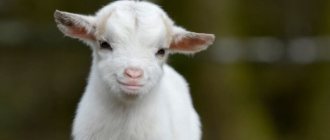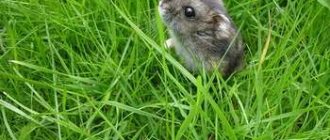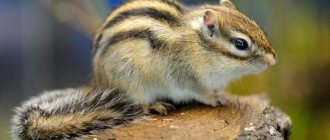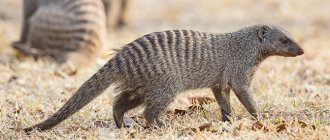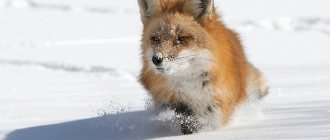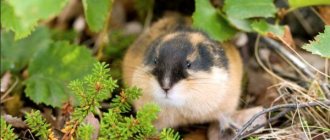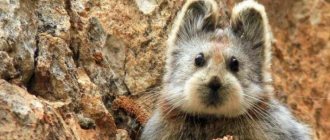These small, furry rodents are one of the most popular pets.
flickr/pyza
Hamsters have won a strong place in the homes and hearts of caring owners thanks to their unpretentiousness, friendliness and intelligence. But despite all their advantages and popularity, the decision to place a new furry pet in your home must be approached with all responsibility.
To buy or not to buy?
The first thing you need to pay attention to is that family members are not allergic to animal hair or bedding fillers. Second, but no less important, is the choice of location for the cage of the future pet. Hamsters equally do not like drafts, too warm or cold air, and dampness. They do not belong in a smoky room, on the floor or windowsill. It is important to remember that these are living beings and they have the right to demand that they be treated with dignity.
flickr/pyza
Other indisputable advantages of keeping hamsters include their low cost and ease of care, which does not require special skills. The small amount of food a hamster needs for a full life will not affect the family budget in any way, and its cage will not take up much space in the apartment.
What is the character of hamsters?
How do we know domestic hamsters? These are friendly and welcoming babies who love to sit in the arms of their owners and play with pleasure.
Important. You need to respect the boundaries of the animal; if it is resting, you do not need to wake it up or pick it up. Having suddenly woken up and become frightened, the animal can behave aggressively and unexpectedly for the owner.
But if you happen to meet a wild animal, you should not make any attempts to catch it or treat it with some kind of delicacy. Such actions of yours may end unfavorably. In the wild, these fluffies are absolutely not so friendly , because they have to worry about their safety and getting food on their own.
The animal may well consider a human a predator who poses a real danger. The hamster will protect itself in every possible way and will not look at the fact that a person is many times larger than it in size.
Even tame hamsters will react aggressively to a person’s desire to enter their house. Therefore, it is recommended to place animals in different cages so that they do not have to defend their territory.
Cell selection
A cage with vertical or horizontal bars is the most suitable and comfortable home for a hamster. Its size depends on the breed of hamster. For dwarf hamsters - Djungarian and Roborovsky - the height and width are approximately 30 cm, length - 50 cm. For golden or Syrian hamsters, it is better to choose a larger cage - 40 cm wide and high, about 60 cm long.
Unlike Syrian hamsters, Djungarian and Roborovian hamsters are indifferent to climbing rods and other acrobatic tricks, so plastic cages (dunes) are quite suitable for them. Under no circumstances should hamsters be placed in tall and narrow aquariums - bacteria multiply very quickly here, there is high humidity and there is almost no access to fresh air.
flickr/pyza
Description of the rodent
Red hamster eats a leaf
– Advertisement –
Hamsters are small rodents with a dense build, short legs, small ears and short tails. The body length ranges from 5 to 34 cm, the tail is from 0.7 to 10 cm in length. Females can exceed males in size. The fur is thick, the back is colored from ash or brownish-gray to dark brown-ochre. The abdomen is found in black, white or gray. There is a pronounced black stripe on the back. Hamsters also differ from other types of rodents in having well-developed cheek pouches.
Cage interior
To make your pet feel happy and healthy, he needs to not only be fed, but also entertained. Golden hamsters cannot do without climbing devices - various decorative branches, tubes, labyrinths, obstacles that create several tiers in the cage at once. Here, it is necessary to have a wheel with cross bars; it can be attached to the wall or installed on the floor of the cage.
Medium-sized sawdust, compressed or mixed with shavings, as well as fine sifted sand for dwarf rocks are most often used as bedding. All types of textile or paper bedding, including newspapers, cotton wool, and rags, are strictly excluded.
An important place in a hamster’s home is a house for sleeping and resting; here he can store valuable things. The house should be quite spacious and comfortable, preferably attached to the wall. Its design should provide easy access for washing and ventilation.
flickr/pyza
Having bought a cage and placed a hamster in it, immediately install a toilet in it with a special filler that absorbs odor and moisture. You need to train your hamster to use the litter tray from an early age, otherwise retraining it will be very difficult and often impossible. The filler must be replaced once a week.
You can purchase a feeder in a store or make it yourself, taking into account the size of your pet. On average, the size of the feeder varies from three to ten centimeters, with a height of about one and a half centimeters.
You can use a small container - about 50 milliliters - as a drinking bowl. This volume will fully satisfy the hamster’s daily need for water. The water in the drinking bowl should be changed daily, and it is also very important to ensure that there is no wet sawdust around the container.
flickr/pyza
Where do hamsters live in the wild?
There are actually 26 species of wild hamsters (Russia has 14) that live naturally in parts of Europe, Asia and the Middle East, including the Syrian hamster, which originates from the region surrounding Aleppo, Syria. Furry animals can also be found in Greece, Romania, Belgium and northern China.
Tiny creatures are helped to survive in the wild by large incisors on the upper and lower jaws, which never stop growing, as well as pointed claws on their paws. Because of these features, the animals are excellent diggers and can live and nest underground. Animals can carry food in their cheeks: from nuts, insects, to their own feces.
Did you know? Hamsters can catch the flu from people. The symptoms of a cold in an animal are the same: runny nose, fatigue and sneezing.
But hamsters have a hard time in the wild. Furry creatures are nearsighted and colorblind. To detect food, they must rely on their sense of smell. These rodents are particularly susceptible to loud noises and are extremely vulnerable to high or low temperatures and drafts, meaning snowy conditions drive the animals underground. It is important for them to bury themselves on time. The dangers rodents face prevent them from living long in the wild.
In what natural area
The furry animals' habitat is mostly open, arid landscapes. In the wild, they like to live in warm, dry places such as sand dunes or on the edge of the desert. Therefore, most likely, the first hamsters were discovered in Syria. The animals also live in forest-steppe and steppe natural zones. Even in the mountains you can find them at an altitude of up to 3,600 m. Hamsters do not inhabit only Antarctica and Australia.
Did you know? A female hamster can place her baby on her cheek to protect him from any danger.
Steppe
Some species of hamsters have received “registration” in the steppe and forest-steppe zones of the Russian Federation (14 species in total). They are also common in China and Central Asian countries. In the wild it can be found in Korea and on the southern border of the taiga. The well-known and well-studied dzungarians in their natural habitat are found in the steppes and semi-deserts of Western Siberia, Central and Central Asia.
They have spread even to the north of Eastern Kazakhstan. The main enemies of steppe rodents are cunning foxes and sneaky weasels, badgers and ferrets. Owls and kites also attack animals. Hamsters should be wary of many birds of prey: eagle owls, steppe eagles. The best salvation for rodents is to escape into a multi-chambered, perhaps two-meter deep, mink.
Forest
Forest rodents live in North America, mostly in the southwestern United States. They can also be found in northern Mexico and Canada. This type of hamster is often called tree rats. Night dwellers settle down close to people. These forest rodents build their “home” on rocks, among stones, under or on trees, and their home can be found at a height of 6 m. Various types of seeds, nuts and mushrooms are their favorite delicacies. For ordinary domestic cats and dogs, forest rodents often become easy prey.
Field
In the wild, this representative can be found from southern and central Europe to northwestern China. Since the problem of deforestation is the main “scourge” of many countries, field hamsters have perfectly settled in close proximity to people.
Important! Ground and winged predators are the worst enemies of field hamsters.
In particular, they build their own home:
- on personal plots and vegetable gardens;
- where there are areas of large vegetable plots;
- in the gardens.
The karbysh is not afraid of winter and harsh conditions; it simply hibernates. Waking up and not leaving its home, the animal refreshes itself with prepared supplies and falls asleep again.
Habitat
Hamsters can live where there is grass vegetation. In the forest-steppe and steppe they build their homes. Their habitat can be the outskirts of fields, large lands and vegetable gardens. Hamsters often settle near river valleys and near springs. There are species that dig holes in thickets of weeds or settle down among plantings of bushes.
Find out how hamsters see the world.
For some species, a mountain slope or cliff may become a “home,” while others will settle in human buildings. Hamsters in a chosen area dig extensive interconnected trails and burrows to live in, store food, raise their young, and hibernate.
Where are they found in Russia?
As for the Russian Federation, the Daurian hamster lives from the Irtysh to Transbaikalia in the steppe and forest-steppe zones. The grass-wormwood steppes from the east to the south, almost to the shores of the Aral Sea, are inhabited by Eversman's rodents. And the Transbaikal animal can be found in the steppes of Transbaikalia in the southwest. The Siberian hamster has received its “registration” on the dry flat and hilly steppes in Tuva.
He is considered a cousin of the Dzungarian representative, since he is very similar to him in appearance and habits. In the overgrown sands of Tuva, a medium-sized, very light-colored Mongolian hamster builds its home. The gray rodent inhabits the European part of the Russian Federation. It is found in the Moscow region, the Caucasus and the southern side of Western Siberia. Some noted that this specimen can be seen in various buildings even in Moscow.
We buy only healthy hamsters
When choosing a hamster, it is very important to make sure that your future pet is healthy. A visual inspection and observation of his behavior will be enough to make sure that everything is fine with him. So, a hamster is healthy if:
- He has a shiny, thick coat with no signs of hair loss. Scars spoil the appearance of the animal, but do not indicate its poor health.
- his eyes are clear, clean around and shiny.
- There is no nasal discharge, the nose itself is healthy and clean.
- the fur around the anus is clean, without signs of diarrhea or inflammation.
A hamster that has just been woken up should not show excessive anxiety or, conversely, apathy. Both options indicate a stressful state of the animal, which can subsequently result in high vulnerability and disease. Only Roborovsky's hamsters are characterized by increased fussiness in any circumstances.
flickr/pyza
Getting used to the new home
In order for your new guest to quickly get used to his new conditions, give him a few days to leisurely explore his home. Once the initial stress has passed, innate curiosity will take over and the hamster will begin to explore its cage with interest, feeling increasingly confident.
If there is a need to take the animal, for example, to the veterinarian, it is not at all necessary to take the entire cage with you - it is enough to purchase a small carrier for rodents. Subsequently, it will come in handy during general cleaning of the cage. Alternatively, a well-ventilated cardboard box can be used.
flickr/pyza
How to handle a hamster?
Gaining your hamster's trust will take patience and some time. However, all the efforts spent on this will pay off in full - communication with your pet will bring you only joy. What are the do's and don'ts when handling hamsters?
It is forbidden:
- make sudden movements or wave your arms near the hamster;
- pick up a hamster that has just woken up or is sleeping;
- drive into a corner or cover with palms;
- scream loudly near the cage;
- leave it on high surfaces - it does not distinguish distances and will definitely fall down;
- grab by the scruff of the neck with a rough movement.
Can:
- talk to the animal in a soft, calm voice;
- when picking him up, do it slowly and carefully, clasping him under the front paws;
- touch the hamster only with clean hands and give him the opportunity to sniff your hand first - this way he will quickly get used to your smell;
- Give him a chance to calm down if he is scared.
flickr/pyza
Anatomy and appearance
Rodents in nature reach a size of 30-35 cm, body weight reaches 700 g. Females are smaller than males. The body is tightly knit and rounded, the neck is slightly pronounced. The head smoothly transitions into the body. The ears are short and rounded. The tail is short, up to 3-6 cm. At first it is thick, tapering towards the tip.
The front and hind legs are short. The claws are strong and well adapted for digging the ground. Hamsters' teeth gradually wear down and grow back throughout the animal's life. The fur is dense, with a thick undercoat. The predominant color is brown, with large white and black spots. There are animals of gray, sand and black colors.
Rodents have a dense, built-up body.
Their vision is poor, their hearing and sense of smell are well developed. Scent glands are located on the animal's body.
During its travels, the animal rubs its back against objects, leaving an odorous substance on them. Based on the smell, the animal can easily find its way home.
What to do if bitten by a hamster?
Hamsters are harmless, but very sensitive and timid creatures. Therefore, sometimes there is a risk of being bitten, but not out of malice, but for the purpose of self-defense. Additionally, if your hand smells like food, your hamster may simply mistake it for a tasty treat. What to do if you are bitten?
Firstly, remain calm and not punish the animal - he did not do it out of malice. Carefully place it in the cage and treat the bite site with brilliant green, alcohol or hydrogen peroxide, and apply a band-aid. If your hamster is healthy, then there will be no dangerous consequences from the bite.
flickr/pyza
Conservation status
The Transcaucasian hamster is protected in Georgia because it is in danger of extinction. A gray hamster was taken under protection in Russia in the Lipetsk and Tambov regions. In the Nizhny Novgorod region and the Republic of Tatarstan, the animal is included in the Red Book. The gray hamster has a special status in the Penza region.
To save Alsatian hamsters (a unique species) from extinction in France, 3 million euros were allocated. According to the European Commission, the importance of protecting wild hamsters is constantly growing. In fact, these furry animals are part of the ecosystem. Its proper functioning depends on the balance created by a number of living and interacting organisms.
What and how to feed hamsters?
The main food of hamsters is solid grains such as wheat, oats, and millet. They also love to nibble on seeds and nuts, but these delicacies cannot be their main food; it is better to leave them as dessert. Hamsters satisfy their need for fluids and vitamins with juicy vegetables and fruits - apples, carrots, pears, celery, cucumbers, beets, and corn. Garlic, onions, citrus fruits and cabbage should be excluded from their diet. Sometimes you can pamper your hamster with sweet berries in small quantities - strawberries, raspberries, grapes.
Feeding occurs twice a day - morning and evening. To determine the portion size and taste preferences of your pet, just watch him for a while. And don’t forget to give him a drinking bowl with clean water every day.
flickr/pyza
Features and habitat
In 1930, an animal similar to a hamster . Interest in this animal was based on the search for the “Syrian mouse”, with which children played back in Ancient Assyria. His offspring became the progenitors of the modern large family of hamsters.
The spread of rodents in Central Asia, the steppe regions of Eastern Europe, and then extensive settlement to China and the United States was partly associated with the use of animals as laboratory material and the domestication of unpretentious creatures. In total, there are over 20 species of self-spreading rodents of the main breed of the steppe hamster (common).
Pictured is a steppe hamster
This is a small animal up to 35 cm long, with a dense body, a large head on a short neck. The tail reaches 5 cm. Weight averages up to 600-700 g. Small ears, antennae on the muzzle and black expressive eyes in the form of large beads create a cute appearance for a fluffy bun on short legs with fingers armed with short claws for digging holes and holes.
The animal is protected by sharp and strong teeth, which are renewed throughout its life. A hamster's coat consists of a base of hair and dense undercoat, which provides protection even on sub-zero cold days. The coat color is most often yellow or brown; tricolor spotted, black and white individuals are less common.
There are more than 40 bred varieties with shades of red, orange and gray, spots of different shapes and locations. The distribution area of hamster animals is wide due to their unpretentiousness. It can adapt almost anywhere: mountainous places, steppes, forest belts, suburbs - it hides in burrows from enemies and bad weather.
The main living condition is the availability of food. Animals are very fond of areas along grain fields; they often locate their burrows directly on arable land. Various pesticides and herbicides in land cultivation force animals to leave their homes and move to other places. Human settlements attract people with an abundance of food, so steppe inhabitants often visit barns and courtyard buildings with supplies.
A special feature of hamsters is their amazing thriftiness. The burrows reach gigantic sizes compared to the size of the animals: up to 7 m wide and up to 1.5 m deep. In storage facilities, the weight of accumulated food is hundreds of times greater than the weight of an average-sized hamster.
Special cheek pouches in the form of elastic folds of skin make it possible to carry up to 50 grams of food by increasing the volume several times. Farmers suffer losses from hamster robberies. Entire systems have been developed to counter rodent infestations. They themselves are also the object of hunting in nature for birds of prey and owls, stoats and ferrets.
Water treatments and nail trimming
Hamsters do not like to bathe, so water procedures should be used only when necessary. For bathing, a special shampoo for rodents is best, after which the fur should be blotted with a soft towel. If the room is cool and you are worried that it will freeze, you can lightly dry it with a hairdryer using a gentle stream of warm air.
Overgrown claws are cut off with great care using a special nail clipper or nail clippers.
flickr/pyza
Reproduction of hamsters
Hamsters are allowed to mate after both partners reach three months of age.
On average, the duration of pregnancy in hamsters is from two and a half to three weeks.
For about three more weeks, the babies born will feed on their mother's milk. During this period, it is advisable to add a small amount of protein to the female’s diet - a hard-boiled egg, a piece of cheese or boiled chicken. Before giving birth, it is better to move the cage with the expectant mother to a quiet place with low lighting.
If the female is young and has become a mother for the first time, she may abandon her cubs and even eat them. Unfortunately, if this happened before the babies reached at least ten days of age, then it will not be possible to save them. After 3.5 - 4 weeks, the cubs are separated, being housed in separate cages. They should not be allowed to stay with their mother for more than five weeks.
flickr/pyza
Newborn hamsters are hairless, deaf and blind. For the first few days, their main food is mother's milk, then they gradually switch to small grains. At the end of the first week, their fur begins to grow, and at the end of the second, their eyes open. Within a month, they will be completely accustomed to the world around them.
After the offspring are born, the male should not be in the same cage with the female - he will not harm the babies and even help in caring for them, but it is very likely that the female will become pregnant again, and this can be dangerous for her health.
Character and lifestyle
By their nature, hamsters are loners, aggressive against anyone who encroaches on their territory. They protect their possessions up to 10-12 hectares in size. The size of the enemy does not matter; there are known cases of rodent attacks on large dogs.
If related rodents run away from meeting a person, steppe hamsters may attack. Rodent bites are painful, can cause infection with many diseases, and leave lacerations.
Ruthlessness manifests itself even towards its own individuals. The weaker ones will not escape alive from their strong and toothy relatives if they consider them an enemy during mating time or simply notice an unwanted guest near their reserves. The activity of the animals manifests itself at twilight. Hamsters are nocturnal animals . During the day they hide in holes, gaining strength for fearless hunting.
Deep dwellings are located 2-2 meters underground. If the soil allows, the hamster will go as deep as possible into the soil. The living chamber is equipped with three exits: two “doors” for ease of movement, and the third leads to a pantry with supplies for the animals’ winter life.
The hamster uses the accumulated food only during hungry, frosty times and at the beginning of spring. In other seasons, food consists of food from the external environment. Above the burrows there are always dug piles of earth, sprinkled with grain husks. If cobwebs have accumulated at the entrance, then the home is abandoned; hamsters keep the houses clean.
Not all hamsters hibernate; some species even turn white so that their forays into the snow cover are unnoticeable. Those who wait out harsh weather in shallow sleep periodically stay awake to refresh themselves with accumulated reserves. When the earth begins to warm up, in February, March or early April, it is time for the final awakening.
But before leaving completely, the hamster will still feast on supplies, gain strength, and then open the entrances and exits of the hole. The males emerge from the burrows first, and the females a little later.
Peaceful relations between them are established only during the marriage period, otherwise they exist on equal terms. Hamsters' ability to swim well is amazing. They inflate their cheek pouches like a life jacket that keeps them afloat.
